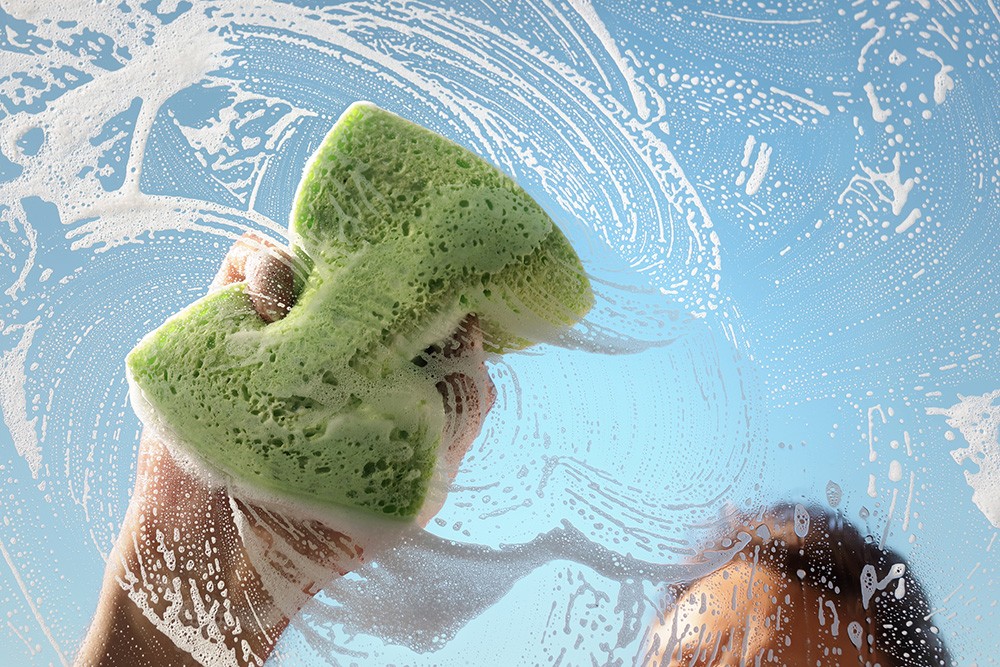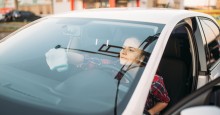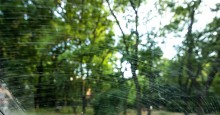
Shorter autumn days mean less visibility when it comes to driving, and that means removing barriers that hinder your line of sight.
Take a look at your vehicle’s windows, windshield, mirrors and headlights. Are they clear? Is there a thin film on either side of glass surfaces which obstructs light?
According to Mike Pennington of Meguiar’s, cleaning the exterior glass and plastic surfaces frequently removes loose debris and helps prevent contaminants from bonding.
“Bonded contaminants just create more work for you,” Pennington says. “If the surfaces feel rough to the touch, use a ‘clay bar’ first and then apply glass or plastic cleaning products.”
A clay bar for automotive surfaces is about the size of a bar of soap with a consistency similar to putty. It is designed as a safe way to remove contaminants, which make surfaces feel sandpaper.
“People may not realize “claying” a windshield can be beneficial to clarity,” Pennington says.
Bonded contaminants can attach themselves to your glass and headlight surfaces as well as painted surfaces, and they do not rinse off readily even if you drive your vehicle through an automated wash. A clay bar allows glass cleaner and/or protectant to work better, Pennington says.
“Apply glass cleaner then dry surfaces with a microfiber towel,” Pennington says. “Keep your glass cleaning towels separate from towels used on other parts of the vehicle.”
Pennington offered the following tips for better driving visibility this autumn at home and while traveling:

1. Use a glass cleaner designed for automobile surfaces. Ammonia-based fluids can cause streaking and also damage privacy film.
2. Pack some glass cleaner and a few microfiber towels in the trunk of your vehicle. You can remove bird droppings, dust, sap and other contaminants that hinder visibility no matter where you drive.
“Even on a road trip, make sure to pack a dedicated glass towel along with some quality glass cleaner,” says Pennington. “This combo will yield better results than the gas station squeegee.”
Make sure to clean both sides of window surfaces. A thin film caused by off-gassing can coat the insides of glass surfaces to create glare and reduce brightness.
3. Use a clay bar designed for vehicle surfaces to remove embedded contaminants. These small particles may be difficult to see but can affect the way light enters glass surfaces or emits from headlight and brake light casings.
To help identify areas with embedded contaminants, drag your hand across different surfaces. Does it feel rough? Apply a clay bar.
4. Pay attention to your vehicle’s side mirrors–they require the same attention as the windshield. You may apply the same products used on your vehicle windshield.
5. Prevent dull headlights by removing contaminants that layer across the surface. Use a product designed specifically for use on headlight; avoid window glass cleaner.

“Most modern headlights are plastic and not glass, so they require a different product than applied on a windshield,” says Pennington.
There is one notable exception.
“If you own an antique collector car with true glass headlights, they may be cleaned the same way as your windshield,” Pennington says.
6. Consider a headlight restoration kit for cases that have yellowed. A restoration kit helps improve brightness and visibility.
“These kits are easy to use and deliver amazing results,” Pennington says.
7. Clean all of your exterior plastic light surfaces to improve brightness for other drivers. Pennington considers this an especially important safety step for brake lights, especially on those autumn days or nights with fog or rain.
8. Clean windshield wipers, which tend to get caked with insects and grime as summer blends into fall. This helps extend the life of blades and improves contact with the windshield.
“Make sure to dry and wipe them off as well,” Pennington says. “This will continue to remove build-up that can reduce blade life and effectiveness.”
9. Replace dry, cracked blades. There are a variety of choices: “winter blades” are for drivers who live or travel in snow-prone areas, conventional rubber blades or “beam” blades that are designed to conform to the contour of your vehicle’s windshield.
10. Replace the rear wiper blade on your SUV. This solitary blade is an important component of your vehicle’s safety equipment, but it is easy to forget until you are caught in an autumn story far from the nearest auto dealership or parts store.
“The best and easiest car care is routine maintenance,” Pennington said. “That goes for cleaning windows as well as cleaning painted surfaces. Ignoring contaminants on glass surfaces and plastic light surfaces creates extra work when you try to return them to ‘like new’ condition.”
See our wiper blade buyer’s guide.
Copyright © 2024 by Sensible Driver. All rights reserved.